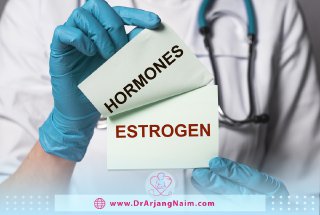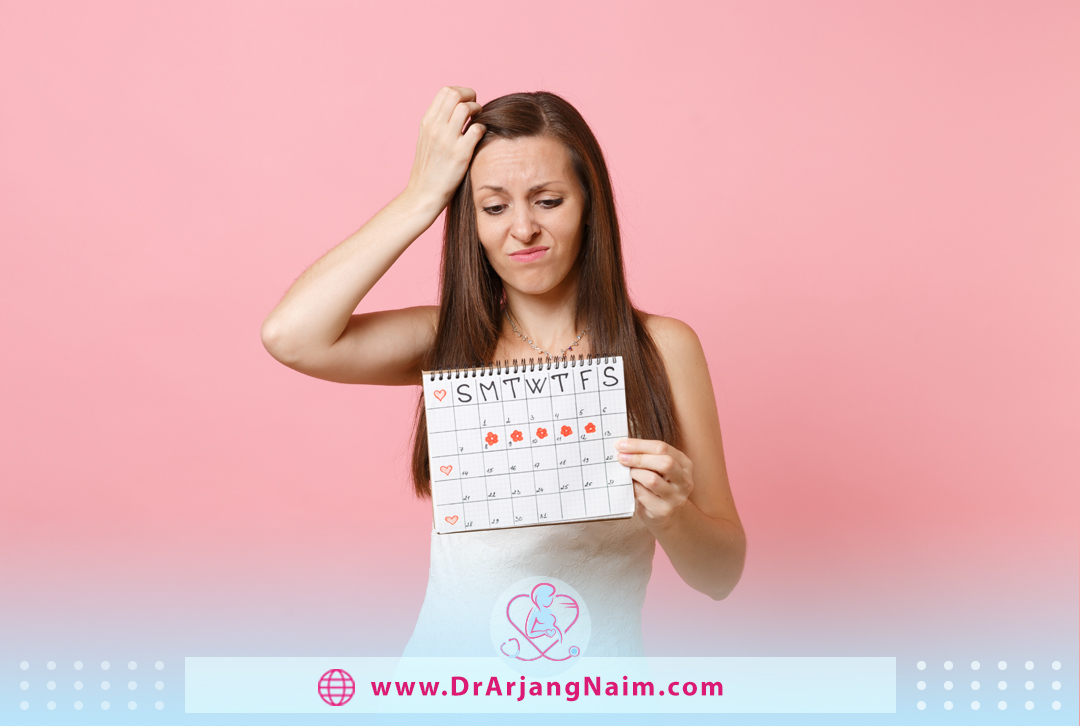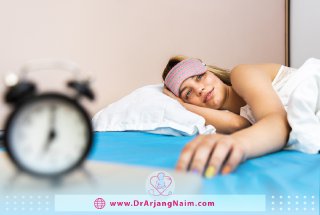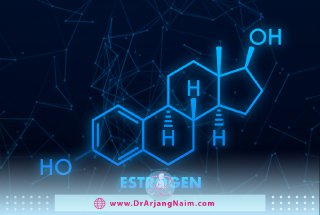Estrogen is a hormone that plays various roles in the body. In women, it helps to grow and maintain the reproductive system and female characteristics such as breasts and pubic hair.
Hormones facilitate communication between cells throughout the body. Cells with estrogen receptors have functions that are activated or deactivated by it. Think of estrogen as a key and receptors as a lock; together, they make the body’s system work.
This hormone contributes to cognitive function, cardiovascular system function, bone health, and other essential body processes. However, most people know it for its role alongside progesterone in women’s sexual and reproductive health. Ovaries, adrenal glands, and fat tissues produce estrogen. Both men and women have this hormone, but women produce more.

Different Types
The body produces three different types of estrogen. During life, its amount changes.
Estrone (E1)
Estrone is the second most common type of estrogen that the body produces during the reproductive years. It also has a weaker effect than estradiol on estrogen-specific hormone receptors in the body.
Estrone is primarily made from another type of sex hormone in the body called androgens. A special biochemical process called aromatization converts androgens to estrone. This process mostly happens in body fat tissue or fat cells and muscles.
Only a small amount of estrone is produced by the ovary. During menopause, when the ovaries stop producing hormones, estrone is the only type the body continues to produce.
Estradiol (E2)
Estradiol is the body’s main estrogen during reproductive years. This is the time from before the first period to the last period of menopause. During this time, there is more estradiol in the bloodstream than other types of estrogen. Estradiol also has the strongest effect on estrogen-specific hormone receptors in the body. Estradiol is mainly produced in the ovaries, and its production varies during the monthly menstrual cycle.
Estriol (E3)
Estrone is the second most common type of estrogen that the body produces during the reproductive years. It also has a weaker effect than estradiol on estrogen-specific hormone receptors in the body.
Estrone is primarily made from another type of sex hormone in the body called androgens. A special biochemical process called aromatization converts androgens to estrone. This process mostly happens in body fat tissue or fat cells and muscles.
Only a small amount of estrone is produced by the ovary. During menopause, when the ovaries stop producing hormones, estrone is the only type the body continues to produce.
What role does estrogen play in women’s reproductive health?
Estrogen, like all hormones, is a chemical messenger. This hormone tells the body when to start and stop processes that affect sexual health and fertility. These processes cause important changes in the body.
Puberty
Estrogen levels increase during puberty. This increase leads to secondary sexual characteristics such as breasts and changes in overall body composition.

Menstrual cycle
Along with hormones made in the brain (FSH and LH) and progesterone, estrogen plays an important role in the menstrual cycle. These hormones exist in a balance to maintain regular menstruation. It is involved in ovulation and thickens the uterus lining to prepare it for pregnancy.
Pregnancy & Fertility
This hormone peaks in the days leading up to ovulation. This is the most fertile period for every woman. At the same time, it thins the cervical mucus, which sperm must swim through to reach an egg and fertilize. These changes caused by estrogen make it easier for a woman to get pregnant if she has sex.
Regardless of where you are in your menstrual cycle, the presence of it makes sex easier. It keeps your vaginal walls thick, elastic, and smooth and reduces the pain caused by sex.

Menopause
Estrogen levels decrease during perimenopause, just before menopause. Perimenopause may take several years before menopause. Menopause officially begins when a period does not occur for 12 months.
It usually occurs around the age of 51. With menopause, estrogen levels decrease, and ovulation no longer occurs. Decreased estrogen may lead to symptoms such as vaginal dryness, mood swings, night sweats, and hot flashes. The primary estrogen in the body changes from estradiol (E2) to estrone (E1) during menopause.
Non-reproductive function
Estrogen, as the main sex hormone in the body, performs many important tasks unrelated to fertility. A hormone (mostly estradiol) acts on body parts with specific estrogen hormone receptors. It is involved in many important functions throughout the body.
Bone development and health
Estrogen plays an important role in healthy bone growth. It also regulates bone turnover in mature bones and protects against bone loss. At menopause, when the hormone levels decline, women can experience a significant increase in bone resorption because the protective effect of estrogen is lost. This increase in bone loss can lead to osteoporosis, which puts a person at greater risk for hip fractures.
Heart health
This hormone helps protect against heart disease. This hormone reduces inflammation and controls cholesterol levels to help maintain the health of blood vessels. The positive effect of estrogen in preventing heart disease in premenopausal women is significant. At menopause, when the protective effect of it is lost, heart disease increases in women.
Mood management
This hormone has a very important effect on the brain. It affects how brain structures connect, how brain cells communicate, and even the shape of the brain. In addition, it plays an important role in mood because it strongly affects a brain chemical called serotonin (serotonin is a mood-balancing chemical); when low estrogen levels, serotonin levels also decrease.
Where is estrogen located in the body?
The ovaries make the most estrogen during the reproductive years. Adrenal glands (glands on the kidneys) and adipose tissue also secrete estrogen. The placenta secretes this hormone during pregnancy.
Once released, estrogen travels through the bloodstream until it reaches the part of the body that needs to be stimulated. They bind to a protein called the estrogen receptor. Receptors are located throughout the body.
Estrogen Imbalances
Ninety-five percent of women do not have a significant disturbance in estrogen until they reach menopause. Symptoms of too low or too high include:
- Anorexia nervosa: Conditions such as anorexia nervosa are associated with low estrogen levels. Too little estrogen can cause irregular and missed periods (amenorrhea). People with very little body fat or an eating disorder may have low estrogen.
- Breast cancer: Exposure to estrogen does not increase the risk of breast cancer but may worsen breast cancer.
- Endometriosis: Estrogen does not cause endometriosis but may worsen endometriosis pain.
- Fibrocystic breasts: Fluctuating estrogen levels during the menstrual cycle can cause breast tissue to become lumpy, tender, or uncomfortable.
- Infertility: Too little or too much estrogen can disrupt the menstrual cycle. Underlying causes that can lead to low and high estrogen may be related to infertility.
- Obesity: Levels of this hormone are often higher among people with more body fat.
- Osteoporosis: Low levels of this hormone can weaken bones, so they break more easily.
- Polycystic ovary syndrome (PCOS): Polycystic ovary syndrome is a condition that occurs when the ovaries produce too many androgens. Sometimes in polycystic ovary syndrome, estrogen levels are too high compared to progesterone levels.
- Primary ovarian insufficiency: In this situation, the ovaries stop producing eggs prematurely. As a result, the ovaries do not secrete estrogen.
- Premenstrual syndrome and Premenstrual dysphoric disorder: Cyclical hormonal changes associated with menstruation can lead to unpleasant physical symptoms and mood swings.
- Turner Syndrome: The ovaries are often underdeveloped in Turner syndrome, resulting in low estrogen. People with this condition may not have breasts or periods.
- Uterine cancer (endometrial cancer): High estrogen levels may cause the lining of the uterus to grow, and as a result, cancerous cells may begin to grow.
What happens when estrogen levels are consistently low?
Symptoms may include:
- Weak or brittle bones
- Hot flashes and night sweats
- Breast tenderness
- Headaches, trouble concentrating.
- Fatigue, drowsiness, trouble sleeping
- Mood changes, irritability, and depression
- Irregular periods or no periods
- Vaginal dryness
What happens when estrogen levels are consistently high?
Symptoms may include:
- Weight gain
- Decreased sex drive
- Irregular periods
- Worsening symptoms associated with PMDD or PMS
Estrogen therapy
Estrogen therapy can help manage menopausal symptoms as part of hormone therapy. Treatment may include estrogen alone, or it may include a combination of estrogen and progesterone. Hormonal therapy is available as tablets, nasal sprays, skin gels, patches, injections, vaginal creams, or rings.
Possible side effects include:
- Bloating
- Breast soreness
- Headaches
- Leg cramps
- Indigestion
- Nausea
- Vaginal bleeding
Hormone therapy is not suitable for everyone. A family history of breast cancer or thyroid problems may conflict with the use of hormones. Dr. Arjang Naim can recommend hormone therapy by examining the conditions if needed.
Food sources
Some foods contain phytoestrogens, which are plant substances similar to estrogen. Phytoestrogens may affect estrogen levels in the body. Foods that contain phytoestrogens include:
- Cruciferous vegetables
- Soy and some foods containing soy protein
- Berries
- Seeds and grains
- Nuts
- Fruit
- Wine

How to maintain healthy estrogen levels?
It is not always possible to prevent conditions related to hormonal imbalance. However, good practices can be implemented to help maintain overall health.
Get enough sleep
Adequate, uninterrupted sleep each night helps the body maintain healthy hormone levels needed to perform important tasks.
Manage stress
Too much stress can produce too many stress hormones (cortisol and adrenaline). Excessive stress hormones can cause hormonal imbalance.
Get the right amount of exercise
The right amount of exercise can help regulate eating and body fat levels.
Limit alcohol intake
Alcohol increases estrogen levels. Over time, excessive exposure to estrogen may increase the risk of developing cancer.
Practice good eating habits
Reducing the consumption of sugary foods and eating foods rich in fiber and healthy fats can help balance hormones.
The bottom line
Hormones are chemicals produced by the body that act as messengers that help control and coordinate how the body functions and reacts to the environment. Certain glands in the body produce and release hormones with brain signals. Special hormone receptors in the body also receive these chemical messages.
Estrogen is the main sex hormone in women that affects health. This hormone works beyond fertility and sex-related functions. They affect mood, bone strength, and even heart health.
Additional questions
- What are adrenal glands?
Adrenal glands are endocrine glands located above the kidneys. They produce many important hormones, including cortisol, aldosterone, and adrenaline. Adrenal hormones help regulate several body functions, including metabolism, blood pressure, and stress response.
- What are considered reproductive years?
A woman’s peak fertility is between her late teens and late 20s. At age 30, fertility begins to decline. This decline accelerates once a woman reaches her mid-30s. By age 45, fertility has declined so much that natural pregnancy is unlikely for most women.
- What are the two types of adipose tissue?
Adipose tissue is classified into two types, white adipose tissue (WAT) and brown adipose tissue (BAT), which are distinguishable based on tissue color.
- What are five healthy fats?
- Fish
- Nuts
- Seeds
- Olive oil and Avocado oil
- Avocados
- What are ten ways to manage stress?
- Balance work and play
- Plan your day
- Stick to your plan
- Ask for help when you need it
- Use the positive energy of stress
- Deal with problems as they come up
- Eat good foods
- Get enough sleep
- Exercise every day
- Breathe deeply
References
https://www.medicalnewstoday.com/articles/277177#supplements
https://my.clevelandclinic.org/health/body/22353-estrogen
https://www.webmd.com/women/guide/estrogen-test
https://www.everydayhealth.com/estrogen/guide/
https://www.healthline.com/nutrition/foods-with-estrogen
https://www.verywellhealth.com/what-is-estrogen-and-what-does-it-do-to-my-body-4142677




